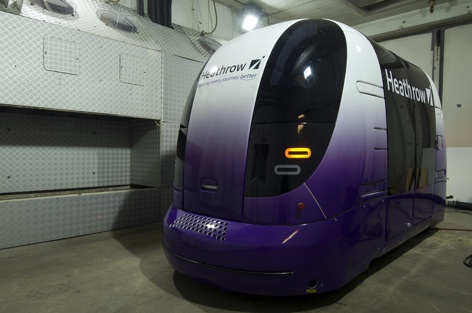In my previous blogs I have talked about the megacities of the future and how driverless micro-cars may become part of them. Some of the questions I have been asked about these are “How will we get from today’s cars to tomorrows driverless vehicles?”, “What will they look like?”, “Why allow cars in these future mega cities at all when you can rely on buses and trams instead?” and “Will people accept them?” Of course all of these are perfectly valid questions, and in this blog I aim to provide the answers.
In terms of “How?”, it is helpful to recognise that driverless cars will have different levels or ‘degrees of autonomy’ as the technology evolves. The lowest degree of autonomy is driver only, followed by driver assisted, partially automated and then finally fully automated. Each of these stages signifies a landmark along the road to driverless cars.
The mass produced cars driving on our public roads today are already well past both the driver only stage and driver assisted stages and are moving to the next stage - ‘partially automated’ - incorporating systems such as automated braking. Coupled with these trends, new interpretations of the activity of driving itself are also evolving, along with subsequent rules and regulations.
Whilst this is all happening, a number of vehicles working at the fully automated level are already in operation in restricted zones. For example, UK firm Ultra Global’s award winning Personal Rapid Transit (PRT) system at Heathrow’s Terminal 5 is already proving hugely successful both in terms of its technological prowess, but also in terms of customer acceptance.

With this in mind, my answer to “How” is that I believe we will see a convergence between the evolution of PRT systems such as the one at Heathrow and the evolution of micro-cars in mega cities. As the technology develops, the PRT restricted zones (or ‘use cases’) will expand to include public roads, as the sensing and communication technology used on the cars matures. New rules of the road will also develop in turn in order to manage the risks. In my view it’s not a significant leap of the imagination to go from these sorts of existing automated urban transport systems - running on raised guide ways, to similar vehicles running on public roads - utilising communications and sensing technologies that are regulated more by rules than by physical boundaries.
Ultra Global’s PRT pods also give a clue towards answering the question “What will they look like?” It is likely that the vehicles will be small, lightweight and driven by electric power in order to achieve zero emissions. If we constrain ourselves specifically towards the design requirements of future megacity mobility we will inevitably end up with a much more fine-tuned vehicle design compared to the cars of today that are designed more for speed, space and range, and are well suited to driving long distances between megacity’s, rather than in them. The current issue of range anxiety will also dissipate in the future as charging infrastructure is more available and urban journeys remain short in distance.
Electric rather than mechanical drive vehicles will open up massive opportunities for innovative design, including the whole area surrounding human machine interfaces. For example, the driverless cars of the future will no longer need a mechanical steering mechanism, engine, transmission or hydraulic system. Furthermore, the driverless cars of the future will not need to be designed in order to meet as many of the crash safety standards as they do today. As megacity cars evolve from the initial idea of small, slow moving pods in restricted zones to larger numbers of pods in increasingly larger zones of operation, they will utilise additional sensing and communications systems for safety and co-ordination. Because of this, their structures will also be quite noticeably different.
The third question I’m often asked is also challenging “Why allow cars in megacities at all when you can rely on public transport such as trams and buses instead?” In order to answer this question, one can also gain insight from the PRT system. This proven system utilises small pods rather than large coaches, giving more flexibility and greater efficiency. The beauty of smaller pods is that they can match capacity and demand more efficiently, whilst offering more flexibility for re-charging. When we extrapolate this to megacity micro-cars, we can turn the question around: “Why allow large buses and trams into megacities when more flexibility and efficiency could be gained by using driverless micro-cars as public transport as well as individual car use?” In reality the sheer numbers of people requiring transport - and the variety of destinations they must reach - will mean that a combination of both larger and smaller autonomous vehicles will be employed in order to meet this requirement.
Finally, when considering the question “Will people ever accept driverless cars?”, my answer is yes they will - once the advantages of the technology and the appeal of the products becomes clear. After recently reading a blog about driverless PRT systems, I was intrigued to find that the author was more concerned about the implementation of battery charging systems rather than the concept of autonomous vehicles. Could this be a sign that public perception of driverless vehicles is already beginning to change?
By exploring these questions we can start to develop and test future scenarios for transport in mega cities. All things considered, I think it is important that we approach this from the perspective of the requirements of future megacities, not the requirements of the car. I believe this is the only sustainable option for both the megacity and the car of the future, whatever it may look like.





AI-generated medical responses need monitoring, study finds
This would negate most of the benefit of using AI in the first place, rather like the Locomotive Act 1865 that required any self-propelled road...